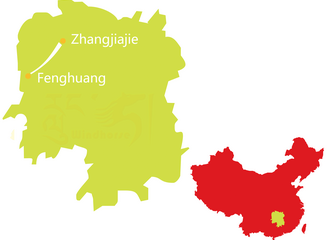Top 10 Must-try Local Foods in Shanghai
Food undoubtedly attaches a sense of thrilling and pleasure to a city trip. You’ll savor foods that seem strange, release a funny flavor, or whose name you can’t vocalize. Shanghai, a certain foodie’s heaven, is the city where you can take your taste buds for an adventurous journey. The food culture of Shanghai is intertwined with its history and its people with daily life.
Shanghai cuisine, also known as Benbang cuisine, boasts one of the best and most typical cuisines in China. Contributed by neighboring Jiangsu and Zhejiang provinces, Shanghai abounds in a selection of dishes that are lighter and mellower, with a distinctive taste of sweet and sour with sugar and soy sauce added. From nibbling on a soup dumpling, slurping bowls of scallion oil noodles, and crunching down a piece of red braised pork belly, the umami taste will send your appetite into overdrive. Due to the “sweet tooth” of the Shanghainese, more sugar is used in Shanghai's staple dishes than in other regional Chinese cuisines.
Here we have collected a list of the 10 best local foods in Shanghai, to help you own an authentic Shanghai cuisine experience during your China tour. Just make sure to go over your chopsticks skills before your arrival!

1. Xiaolongbao or Soup Dumplings 小笼包

Shanghai-style Xiaolongbao, also called soup dumplings, is a type of Chinese steamed bun (baozi). It firstly appeared in Nanxiang which was a village in Jiangsu province next to Shanghai and became the northwestern suburb of Shanghai nowadays.
This delicate thin-skinned Xiaolongbao is traditionally made fresh with pork/shrimp/crab roe/vegetable-filled inside with gelatin-jellied aspic which turns to hot soup by heat from the steaming process. It is typically served hot in a lovely bamboo basket in which it was steamed, so you should be careful to prevent burning the inside of your mouth. Before plonking into your mouth, it’s better to dip it in a bath of vinegar and julienned ginger for a few moments.
A trip to Shanghai isn’t complete without an attempt to taste the world-famous Xiaolongbao. Those soup dumplings can be your first meal in Shanghai, and they are worth going back for more. Xiaolongbao is available in most restaurants in Shanghai, but many expats, locals, and travelers head to the famous Din Tai Fung - a Taiwanese chain with many branches. Although Din Tai Fung is an excellent choice, we would like to share one more option favored by us.
- Fuchun Xiaolong 富春小笼
- Address: No. 650 Yuyuan Road, Shanghai
- Opening hours: 06:30 - 22:30
- Tel: +86-21-62525117
- Price: About CN¥ 30-40 per person

2. Steamed Crab 清蒸大闸蟹
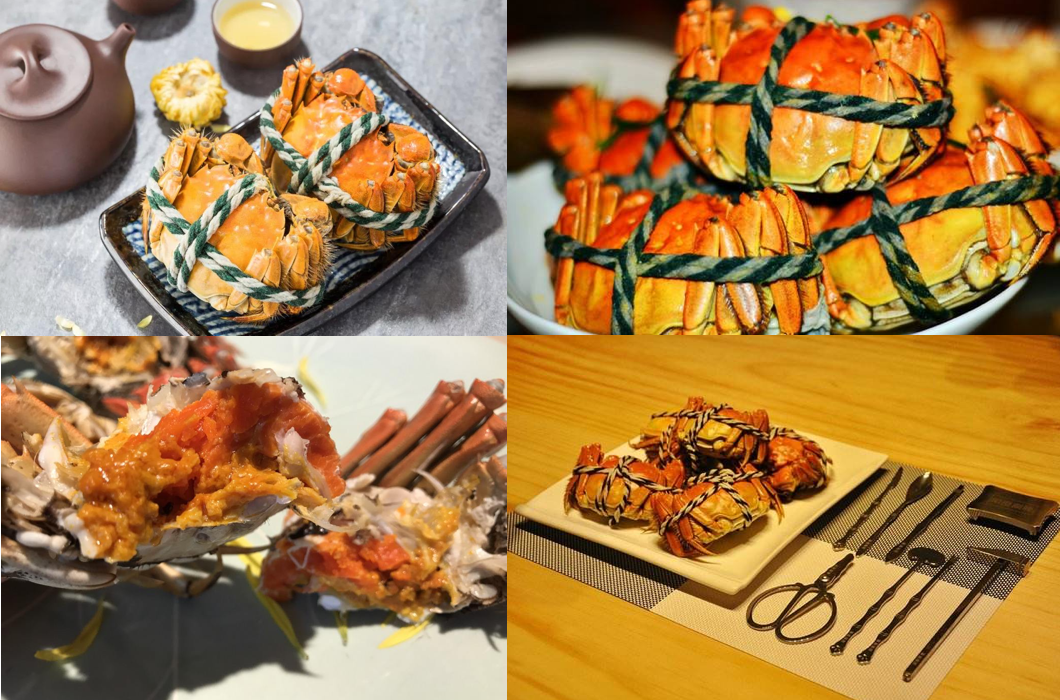
Given Shanghai’s location at the mouth of the Huangpu River, just south of the Yangtze River, it is not surprising that seafood is abundant in this city’s dishes. Shanghai's famed steamed crab uses a medium-sized burrowing crab named hairy crab from nearby Yangcheng Lake. The hairy crab is given the name for its furry claws. It is a scarce autumn delicacy in Shanghai cuisine, as it is treasured for the female crab roe which is usually mature in September by the Chinese lunar calendar, while the males are often harvested in the tenth lunar month. The real Shanghainese crab lovers are fairly fastidious about when to consume the round-belly female crabs and when to consume the pointy-belly male crabs.
The best and traditional way to eat the hairy crab is simply steamed. Without additional ingredients added to corrupt its flavor, it tastes fantastic with excellent quality of its roe and sweet flesh. Locals prefer to dip the crab in a sauce of rice vinegar and ginger when the crabs are fastened with strings or ropes, placed in a bamboo container, steamed, and served. Meanwhile, they may pair the hairy crab with Shaoxing style Huangjiu (yellow wine), which is considered as the best accompaniment, due to its competence to lure out the delicate taste of the hairy crab.
As it can be tedious to de-bone, many restaurants now offer to do the hard work for guests, then simply enjoy this delicacy without the obstacle of actually eating it. Steamed crab can be found in almost all restaurants in Shanghai during the autumn. Below is one of the best restaurants.
- Cheng Long Hang Crab Palace 成隆行蟹王府
- Address: No. 216 Jiujiang Road, Shanghai
- Opening hours: 11:00 - 22:00
- Tel: +86-21-63212010
- Price: From CN¥ 388 per person (definitely not wallet-friendly)

3. Red Braised Belly Pork 红烧肉
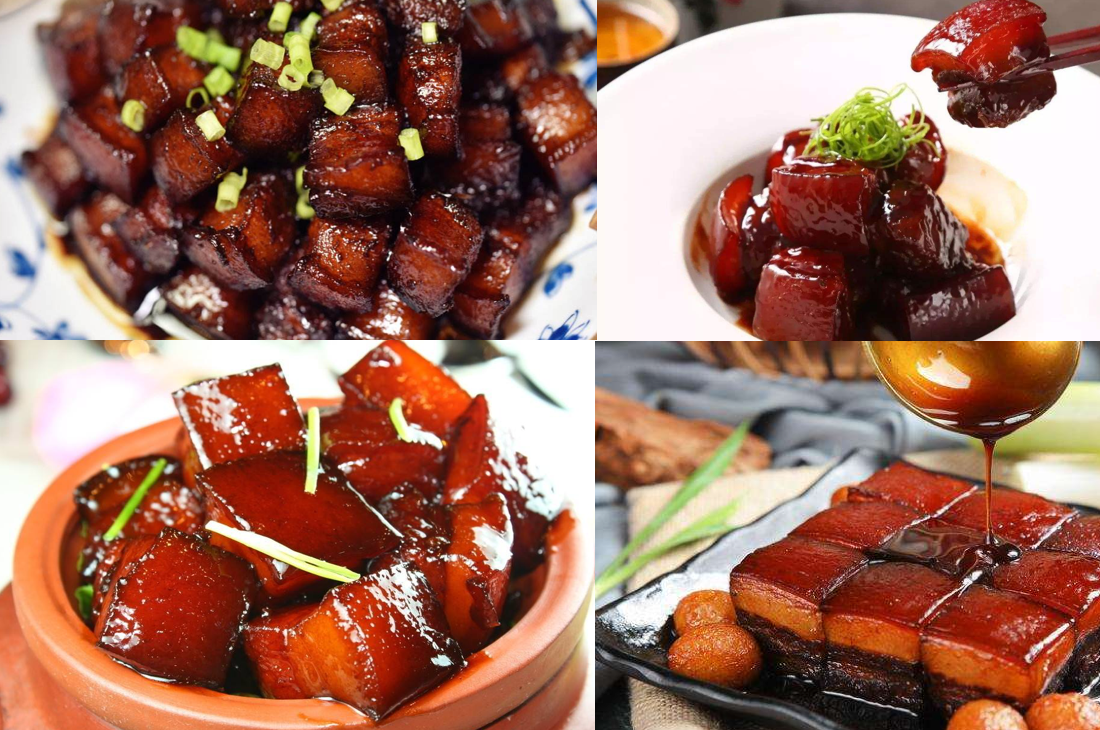
Red braised belly pork or hong shao rou, coming from ordinary families, is a must-have classic dish on the menu of any self-respecting Shanghai restaurant. It superbly showcases the Shanghainese addiction for a mix of savory or sour taste and blasts of sweetness.
This authentic Shanghai dish selects tender belly pork and mixes it with a thick, caramelized and quite sticky sauce - a combination of vinegar, light and dark soy sauce, sugar, ginger, garlic, aromatic spices, and Shaoxing cooking wine that merges into a dark red color, hence the word “red” appears in the name. The pork cubes are slowly simmered up to 24 hours until the fat and skin are jelly-like and delicate. During the long-time braising process, the sauce decreases and gets thick, and the meat easily melts in the mouth. The dish is often served with hard-boiled eggs or dark green vegetables, which can soak up the sauces from the recipe. Travelers can find the most authentic red braised belly pork in the restaurant below.
- Old Jesse Restaurant 老吉士酒家
- Address: No. 41 Tianping Road, Shanghai
- Opening hours: 11:00 - 14:30 & 17:00 - 22:30
- Tel: +86-21-62829260
- Price: About CN¥ 220 per person

4. Pan-Fried Pork Buns 生煎包
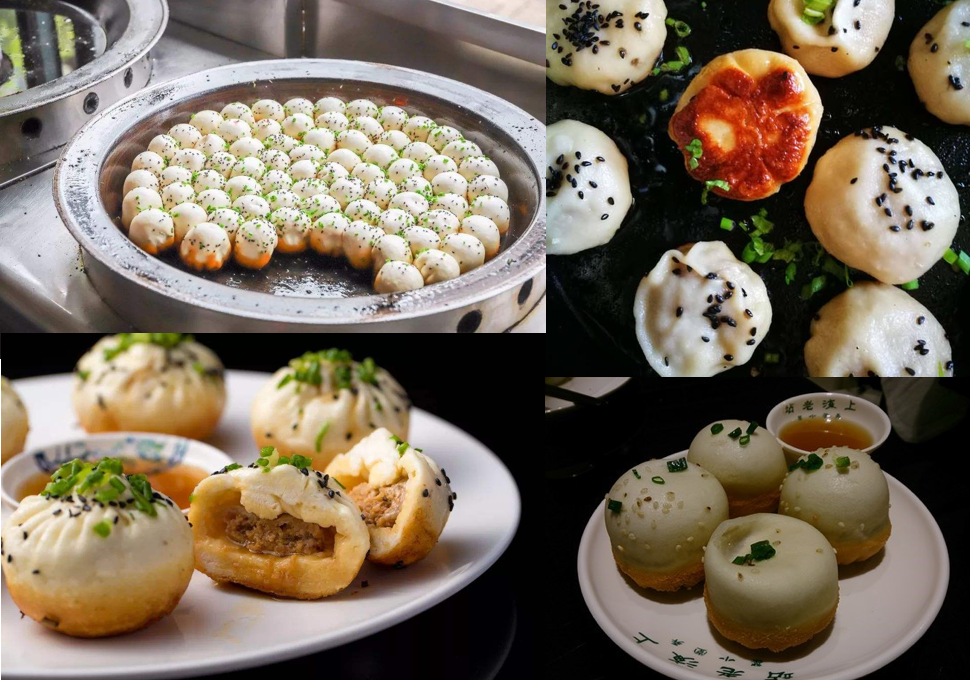
Pan-fried pork buns, a specialty of Shanghai, has been consumed as a ubiquitous breakfast since the early 1900s. Traditionally, locals take it for breakfast, but it makes the perfect staple for a 24-hour restaurant. It is a great midnight bite or “after a few drinks” food. It is usually served in lots of four and accompanied by a small bowl of clear soup, from small windows in most restaurants with only Chinese named signs, so it can be hard for foreigners to take a bite out of this part of the culture.
Pan-fried pork buns, the lesser-known cousin of Xiaolongbao, perhaps hasn’t got as much attention from outside of the local community, but this meat-filled stuff is worthy of compliment in its own right. Being similar to Xiaolongbao, the semi-fermented dough wraps around tender pork and gelatin fillings which melts into the soup after heated, but it is fried in an oiled, shallow, flat pan with chopped scallions and sesame placed atop the buns, instead of steamed in a bamboo basket. After frying, the bottom of the buns becomes golden and crispy, while the rest is white and soft with water sprayed on during the cooking process. With its alluring color, crunchy skin, and succulent meat, the pan-fried pork buns are especially yummy. Must-try restaurant:
- Da Hu Chun 大壶春
- Address: No. 136 Sichuan Middle Road, Shanghai
- Opening hours: 06:30 - 19:30
- Tel: +86-21-63130155
- Price: About CN¥ 29 per person

5. Squirrel Fish 松鼠桂鱼
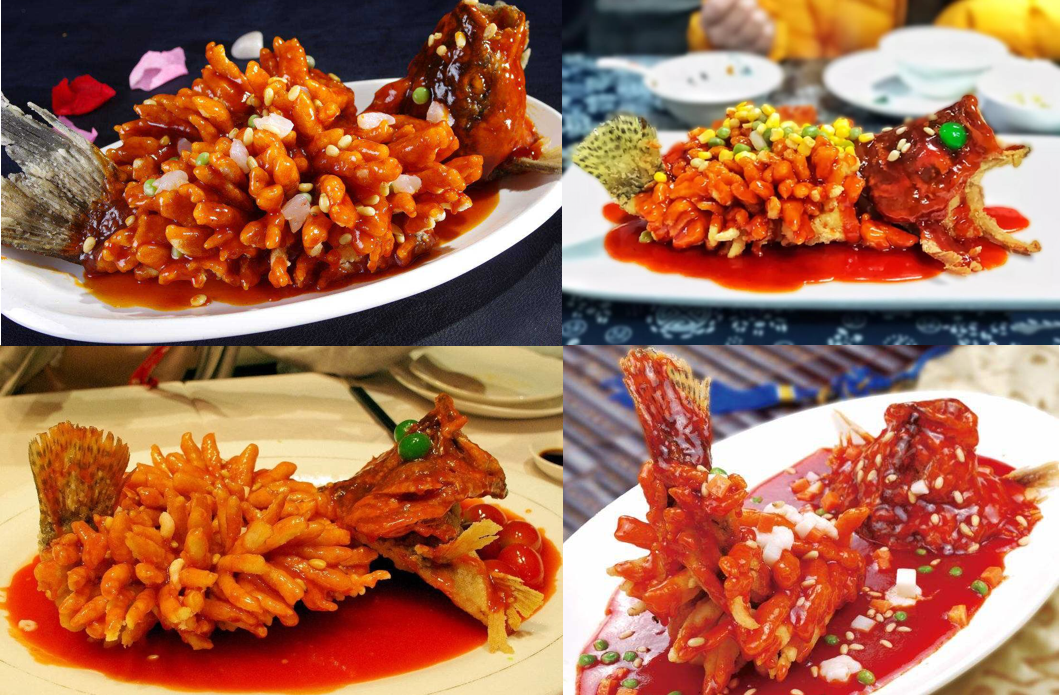
Squirrel Fish, a well-known dish that originated in nearby Suzhou, has made its way to Shanghai as a staple in feasts and banquets. The dish’s raw material is fresh mandarin fish which features tender flesh and sparse bones. The mandarin fish is deboned, carefully scored into a refined shape similar to a squirrel, and doused in batter before deep-frying. After frying, it looks more like a squeaking squirrel with its mouth wide open on the big fish head, the tail soaring high, and the flesh resembles the erecting hair of a squirrel. The outer texture of the fish is extra crispy, while the interior flesh remains soft and tender. Before it is served on the table, the hot broth (with a tangy sweet-sour sauce of tomato ketchup, vinegar, and sugar) is poured over the fish, and the dish is topped with the pine nuts scattered.
Due to its flavor, some people may simply call it sweet and sour fish, but it is unjust to its artful appearance. The squirrel fish is complete in impressive shape, color, flavor, and quality, which matches all critical points for fancy Chinese cuisine, thus it has earned an everlasting position in every fine-dining restaurant in Shanghai. Its vivid layout and delicious taste give rise to the appetite of whoever sees it, including Qianlong Emperor (6th emperor of the Qing Dynasty) whose appreciation raised the name of squirrel fish to the world. Check out the below famous restaurant:
- Hai Wei Guan 海味观
- Address: No. 18 Kangding Road, Shanghai
- Opening hours: 11:00 - 14:00 & 17:00 - 21:30
- Tel: +86-21-62569956
- Price: About CN¥ 300 per person

6. Yellow Croaker Noodles 黄鱼面
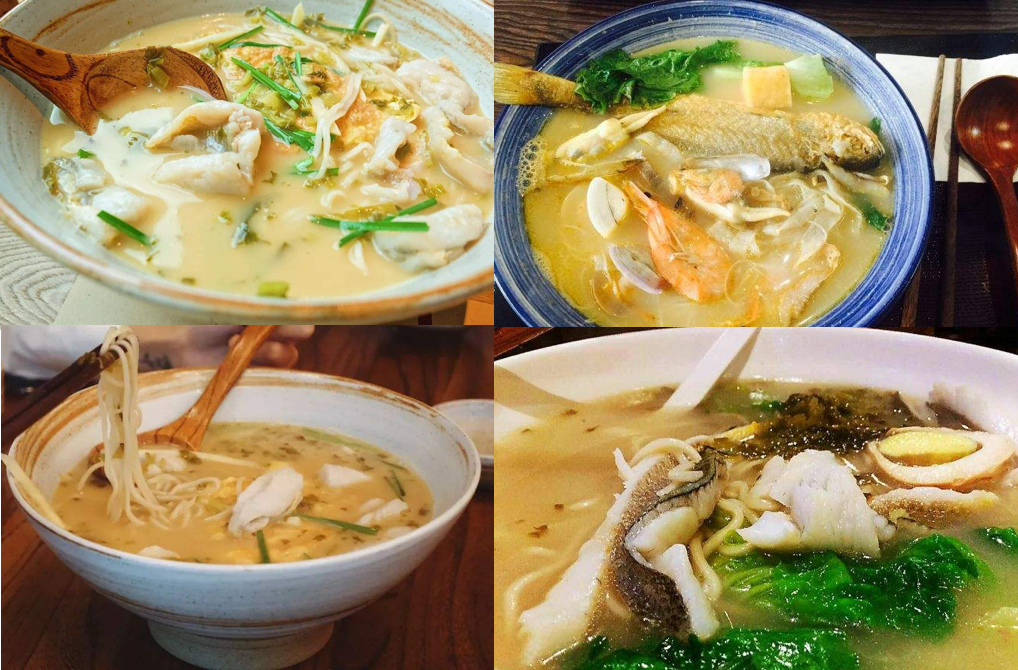
A delicate and seafood-rich collection can be easily found in Shanghai, which is as comforting as tasty. Yellow croaker noodles, one of the most authentic noodle specialties to get your tastebuds a whirl, are virtually long strands of springy noodles in a creamy yellow-golden broth filled with flaky deboned yellow croaker. Unquestionably, Shanghainese extremely love yellow croakers and regard it as the best partner of Chinese noodles. The humble yellow croaker is a spiky little local fish that grows in abundance in the Yellow Sea and can be cooked in different ways. Its delicately-flavored white flesh remains juicy and succulent even after longtime cooking. Another key part of the yellow croaker noodles is the gently flavored broth, which is made from hours of stewing fish bones. To enhance the umami taste, the broth is usually added with a hint of sourness from vinegar.
It is only regrettable without trying a bowl of these yellow croaker noodles which is a must-order during your Shanghai stay. If you are strolling around Xintiandi by chance, grab Shanghai’s most iconic bowl of yellow croaker noodles at the restaurant below. As locals alike and even celebrities will queue just to get a taste of it, the key is to go after 2 pm to avoid peak lunch or dinner hours.
- Xie Huang Yu 蟹黄鱼
- Address: No. 200 Taicang Road, Shanghai
- Opening hours: 10:00 - 01:30
- Tel: +86-18721496757
- Price: About CN¥ 88 per person

7. Crab Shell Pie 蟹壳黄
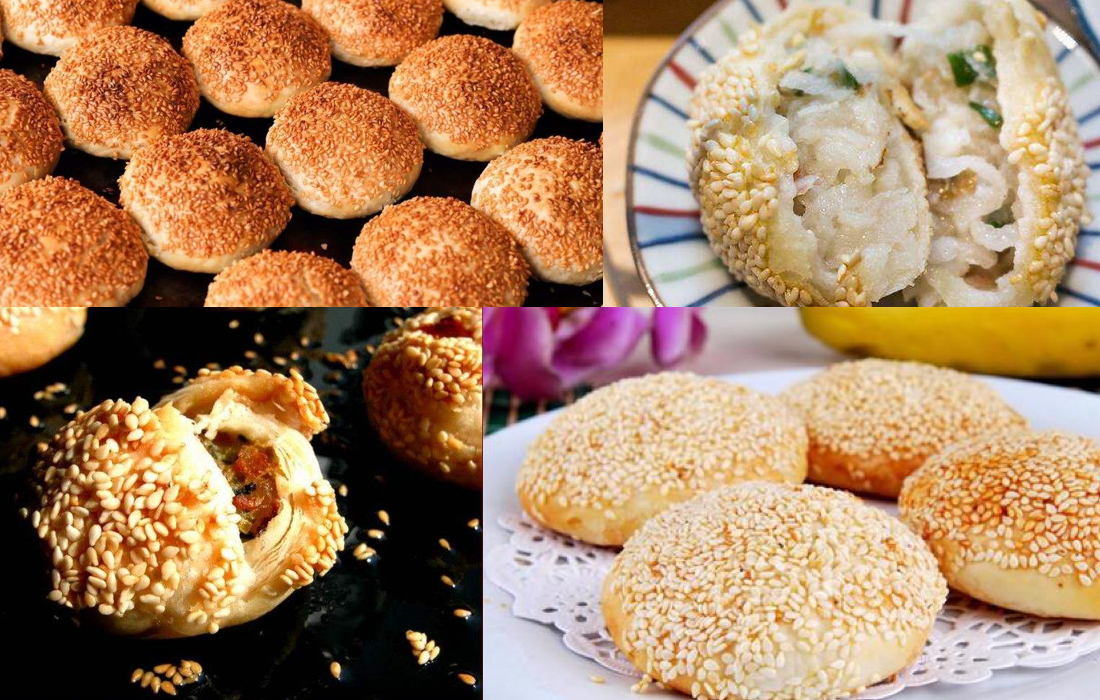
Shanghai is a city where an assortment of specialties and snacks meet. Its flavor is different from the pure sweetness of Guangdong or Hongkong, also different from the spicy of Sichuan or Chongqing. Its flavor is noted for being gentle, delicate, and tasty. Crab shell pie is an example of those representative snacks.
The Shanghainese are notoriously crazy for all things crab, but those hairy crabs from Yangcheng Lake are only available seasonally. To resist their year-round longing, the crab shell pie, aka “poor man’s hairy crab” has come into being, though it is not a crab at all. The crab shell pie is a kind of crispy pastry baked from fermented dough with oil mixture. The dough is divided into small clots, stuffed with sweet or savory fillings, and squeezed to shape a flat round pie. It is then sprinkled with toasted sesame on its outer layer and finally baked in a clay oven until it turns golden brown. This golden brown appearance is reminiscent of the shell of a freshly cooked crab, therefore it is named crab shell pie.
The crab shell pies, along with above mentioned pan-fried pork buns, were the most prevalent snacks in many Shanghai tea houses over decades. Allegiant Shanghainese will line up for hours at the shop below just for a bit of crab shell pie. But trust us, you’ll understand what rewards their waiting once you had a try.
- Wang Jia Sha Dimsum Shop 王家沙点心店
- Address: No. 805 Nanjing West Road, Shanghai
- Opening hours: 07:00 - 20:30
- Tel: +86-21-62530404
- Price: From CN¥ 2.5 per piece

8. Beggar’s Chicken 叫花鸡
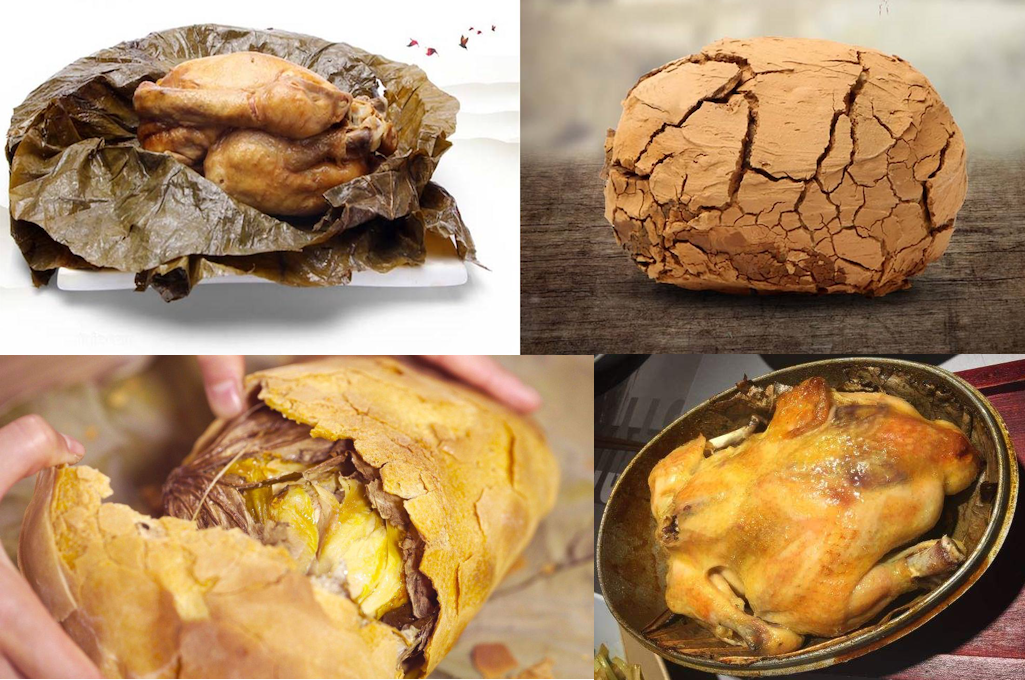
Beggar’s chicken is made from a marinated chicken with various stuffed ingredients, being wrapped tight with layers of lotus leaf, tin foil/wax paper, and mud or substituted dough, and being slowly baked in low heat which takes up to 6 hours. The special traditional cooking way brings the most tender, juicy, and aromatic chicken, and perfectly holds the genuine taste of chicken. After long-time baking, the bones are easily removed from the chicken, and the lotus leaf supplies the alluring “fragrant scent” to the chicken. Though the dish is not appealing in its appearance, it is an authentic Chinese delicacy that one should not miss out on.
The dish dates back to the Qing Dynasty (1644–1911) and comes with a legend behind its origins. Legend has it that this dish was created by a starving beggar who stole a chicken from a farm but lacked a pot or appliances to cook it, then he packed the killed chicken in lotus leaves with mud encased, and baked it in a hole with fire. When he dug up the chicken and broke the outer mud, he found the meat was tender and scented. Though Shanghai is one of the largest and most international cities in the world nowadays, it began as a seaside fishing village with the origin as humble as a beggar’s chicken itself. Beggar's chicken is now widespread in China, with many cities claiming to be its cradleland. Most specialists consent that the dish is coming from Hangzhou.
- Xindalu China Kitchen 新大陆-中国厨房
- Address: No. 199 Huangpu Road, Shanghai
- Opening hours: 11:30 - 14:30 & 17:30 - 22:00
- Tel: +86-21-63931234
- Price: About CN¥ 250-350 per person

9. Smoked Fish 熏鱼
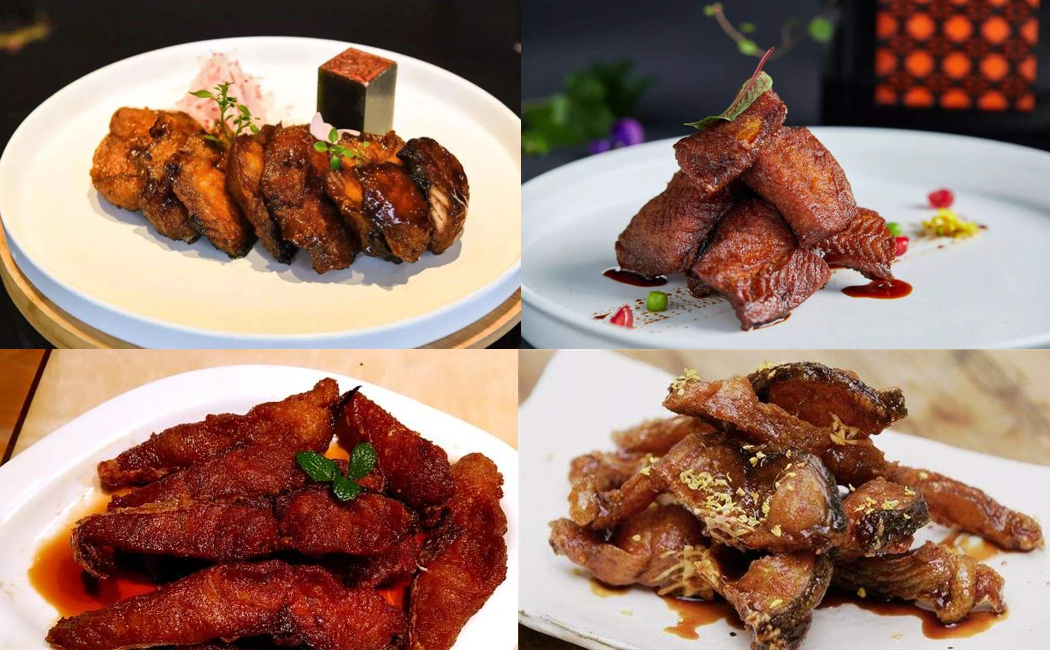
Smoked Fish is not really smoked in common sense, though it appears to be put some time in a smoker. The fresh fish is marinated and spiced, giving the taste and appearance of smoked. It is an ideal dish for those who love spiced food very much. In Shanghai, the “smoked” fish is favored by locals and visitors alike as a cold appetizer or merely as a snack for getting out and about. Although smoked fish is a popular starter all year round, this dish is also considered a must-have for Chinese New Year meals in every family in Shanghai.
The dish usually uses a carp, but any firm-fleshed fish and mild-flavored like pomfret are also ok. The fish is cut into thick slices and marinated with spring onions, ginger, Chinese cooking wine, and oil for several hours or even one night. Then deep-fried and boiled in a very Shanghainese flavored sauce which mixes dark soy sauce and sugar. While the surface is fried to golden brown and crispy, the meat inside is still white and tender and tastes extremely delicious. The smoked fish is best and traditionally served cold, but you can also try and enjoy the hot one.
- Ren He Guan 人和馆
- Address: No. 407 Zhaojiabang, Shanghai
- Opening hours: 11:00 - 14:30 & 17:00 - 21:30 from Monday to Friday; 11:00 - 15:00 & 16:30 - 21:30 from Saturday to Sunday
- Tel: +86-21-64030731
- Price: About CN¥ 185 per person

10. Scallion Oil Noodles 葱油拌面
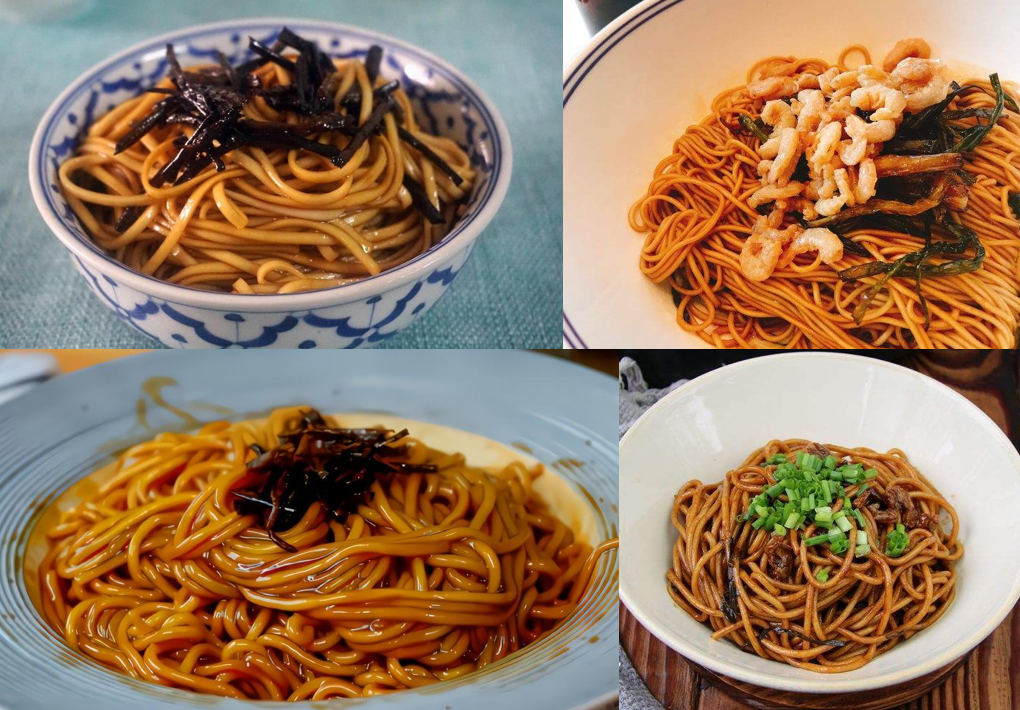
It might be surprising that the humble scallion oil noodles are hailing from cosmopolitan Shanghai. Though it is a simple dish, its flavor is delectable. Apparently, the dish is as simple as can be: stir freshly boiled noodles coated with a thin, brownish soy sauce, some sugar, and topped with a few fried scallions. However, it can straightforwardly thrill your taste buds, which perfectly confirms the concept “Less is more”. It can be served as breakfast, brunch, lunch, or dinner. And it is a top choice to satisfy the cravings of midnight munchies or cure a hangover the next morning.
As its name indicates, scallion oil is the foremost substance for this Shanghai dish. A bunch of fresh scallions is stewed in the oil with gentle heat to extract all the fragrance. People may not fancy this strong “scallion smell”, because they think it will hover in their mouth for a long time and makes the breath unpleasant to others, just like the smell of garlic. However, the stewing process kills the sharply strong smell of scallion but escalates its delightful aroma.
As you may have known, Shanghainese are keen on soy sauce in their dishes. The soy sauce is another key part of the scallion oil noodles. The dish calls for both light soy sauce and dark soy sauce. While light soy sauce is used for seasoning and adding the essential salty flavor, dark soy sauce adds a very mild minute sweetness to the noodles. More crucially, its thicker and darker texture is easier to coat the noodles and gives them an appetizing dark caramel color.
- Hu Xi Lao Nong Tang Noodles 沪西老弄堂面馆
- Address: No. 550 Guangdong Road, Shanghai
- Opening hours: 10:00 - 20:30
- Tel: +86-19822793703
- Price: From CN¥ 7 per person











